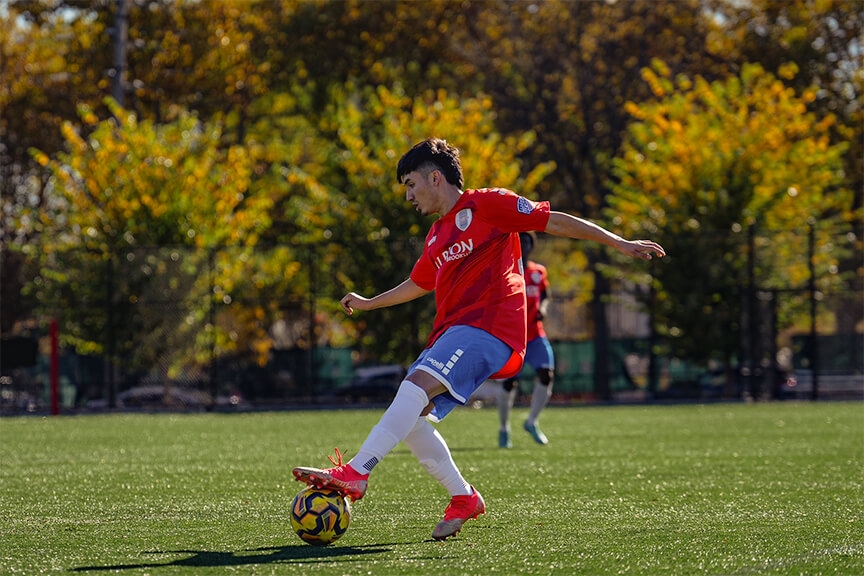Red Hook Football Club is the highest level soccer team in Brooklyn and its leaders are looking to build a club with social justice at its core. The team plays its home games right at the newly renovated Red Hook Soccer Fields.
“This actually started because I needed to find a place to play that was at a decent level,” said Sacha Weiss, founder of Red Hook FC and also an outside back for the team. “I was looking at different options and there was nothing that great in the downtown Brooklyn and downtown Manhattan area but there were options out in Yonkers and deep into Long Island. Trying to keep things more local, I thought to myself ‘If it doesn’t exist, why not go and create it.’ We’ve existed formally since last spring.”
There are six tiers of soccer in the United States and Red Hook FC began in the sixth tier (the lowest level.) The top level is Major League Soccer (MLS) which includes New York City FC and the New York Red Bulls. Red Hook FC, then under the name Albion Brooklyn won every game they played in the spring so they were promoted to the fifth tier. Then in the fall, they finished third in their division in the fifth tier which earned the team another promotion to the fourth tier which is a semi-pro level.
“The dream is for us to one day make the jump from being a semi-pro team to being a professional team,” Weiss said.
Weiss also listed three lower-division clubs in the US that are sustainable and do a lot for their community: Vermont Green, Detroit City, and Oakland Roots. They serve as an example for how Red Hook FC can be successful and sustain that success over a long period of time.
“All three of them have thousands of supporters come to their games week in and week out,” Weiss said. “They stand for more than just something sports-related. They stand for different social justice initiatives. Vermont Green is focused on environmental justice. They were able to bring in not only sports fans but also people who were interested in the environmental justice part of what the team stands for.
“For us, it’s amazing to have these two promotions but the next step is figuring out how to make this sustainable, and we need to get people to care. What’s a better way to do that than doing things that actually help the community? One thing we’re doing is free marketing and advertising for non-profits. We’re also doing different themes for each match day. For example, one match day will be food justice which is important given a lot of the community is on nutritional assistance programs. Instead of having tickets, people can give a can of food when they go to the match.”
While Weiss mentioned some possibilities, there is still plenty of time for new game-day ideas.
As for the roster of Red Hook FC, it is a mixture of players from different backgrounds. Some are top high school players while others are former professional players. They trained together in the cold weather while most teams were enjoying the offseason which helped the team build chemistry.
“The age range of our players goes from 16 or 17 to 37 years old,” Weiss said. “There are also 21 different nationalities which make up the group which I think is really cool. We have African players, European players, and Latin players. We also have two really good players from Red Hook. A lot of players are from the Bronx and New Jersey. Our captain played third division in Spain and was also captain at the University of Vermont.”
While Weiss is founder of Red Hook FC, he is not involved in decisions like who makes the squad and which players will be in the starting lineup. That is completely up to the club’s coach. Weiss is unsure if he will continue playing given the amount of work he is doing behind the scenes to make sure the club is set up to succeed. He has certainly been busy during the offseason this winter.
Red Hook FC resumes play for the spring season in April.
“I’m proud of the success we’ve had so far but we want to make sure we do this the right way,” Weiss said. “That means being engaged with the community and doing things that help the community. You need the right culture to have sustainable success and that’s what we want to build.”









